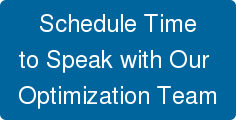EHR Optimization: A Proactive Versus Reactive Approach

For many years, healthcare facilities have focused on simply getting required information technology in place. Recently, there has been an important shift from installing these technologies to learning how to best use them to achieve outcomes that impact the health of patients across the nation. This shift presents a new set of challenges and opportunities.Customer expectations continue to exceed the pace of delivery, and they have expanded beyond clinicians and physicians to include executives, management, patients, families and more. Regulatory initiatives are driving information technology roadmaps and informatic teams are implementing new technology at a faster pace. The focus on implementation has left many organizations with a gap in knowing how well users have adopted the technology and whether they have gained the maximum value of their investment.
Many organizations have assumed a reactive approach to optimization and struggle to support it while consecutively implementing new technologies. They spend numerous amounts of time and effort evaluating and prioritizing customer requests and complaints, only to be limited by lacking the resources and experienced personnel needed to resolve these issues. As a result, customers lose confidence in the IT department’s ability to meet their needs. This viral response carries through to subsequent initiatives, making it harder to achieve true adoption. In addition, lack of an effective methodology that shows measurable improvement impedes the ability to realize the value of both the immediate optimization efforts and the overall investment.
So, what does a proactive strategy for optimization look like?
1. Optimization is a Planned Phase of Every Project
Rarely does an initiative produce the anticipated results on the first pass. Initial training often results in many end users learning how to “get by” in their day-to-day activities. Adoption occurs at a varying pace; therefore, it is important to have a plan in place to address the late adopters. At the same time, if optimization occurs too late, users will have already adopted new sub-optimal workflows, making it more difficult to achieve maximum proficiency. Adding an optimization phase to the project plan following implementation allows facilities to have the resources needed, monitor how they are utilizing the technology and intervene when behaviors can be most impacted.
2. Needs are Identified Before Customers Complain
Many end users who need additional support do not vocalize concerns. Feedback should be sought from a representative sample, not just from those voicing concerns. Users will actively engage if they know there is a dedicated team who anticipates and supports their needs and where there is a culture of optimization.
3. Optimization is Built into the IT Roadmap
The need for optimization is ongoing and should not be considered a one-time event. Building it into the roadmap as a continuous project and reserving a cross-functional team will allow organizations to respond to new issues in a timely fashion, while implementing additional planned projects.
4. A Methodology Utilizing Data is Used
Data uncovers discoveries not apparent in periodic observations or subjective reports. Developing and reporting metrics shows the value of the optimization efforts and helps support staffing for it moving forward, as well as indicates the overall value gained. A well-planned metrics strategy aligns and integrates with other organizational initiatives and goals.
5. There is a Consistent Method for Prioritization
It may not be possible to meet all of the requests of end users, so managing their expectations is equally important. An effective multidisciplinary governance committee driven by the end users will validate the high-priority needs and alleviate time spent analyzing low-value requests. High-priority items that require a major work effort should be balanced with low-hanging fruit. Once priorities are set, they should be communicated so that all staff are working toward a few common goals rather than working on multiple competing initiatives.
Just as healthcare facilities have become more proficient with implementations, which seemed an insurmountable task just a few years ago, they can do the same with optimization. Putting a proactive strategy in place will allow organizations to improve management of staff, manage customer satisfaction and earn the true value of EMR. It is time to start realizing the potential of the EMR and impacting the health of the population, and it all starts with effective and efficient utilization.
The HCI Group’s optimization solutions focus on: physician adoption and usability; clinical adoption and workflow integration; medication management; revenue cycle; system enhancements, redesign and support.

